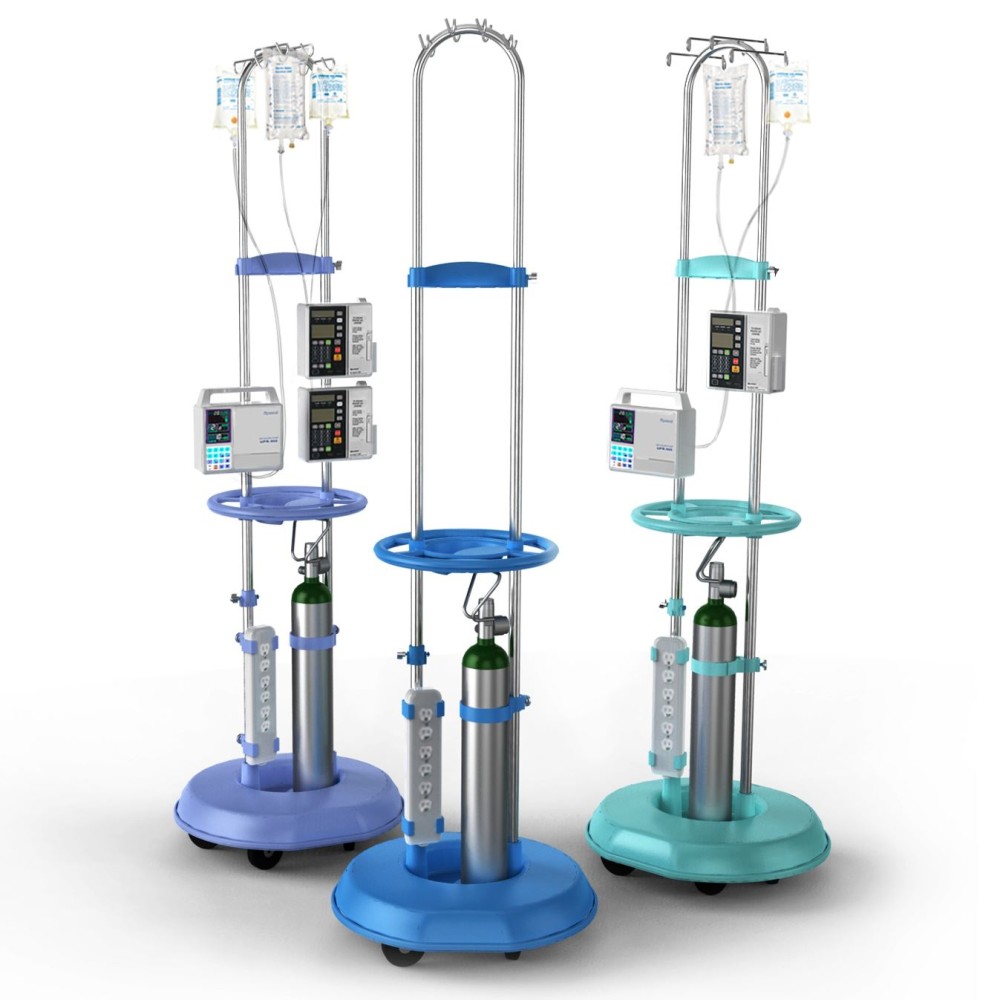By Steve Twedt
Pittsburgh Post-Gazette.
A former cancer patient’s frustrating hospital stay in Chicago years ago has inspired a redesign of the iconic IV pole, and she’s getting help locally from the folks at Bayer MaterialScience.
In 2003, Cari Ugent — then a 30-year-old freelance journalist — underwent a successful stem cell transplant procedure that has cured her non-Hodgkin’s lymphoma. But the treatment was “a beast,” she said recently, and required her to remain in the hospital for two months.
Her compromised immune system put her at high risk of life-threatening infections, so Ms. Ugent was under tight restrictions.
“You can’t use a toothbrush because the bristles could create fissures in your gums. They won’t let you touch a banana because the skin of a banana had too much fungus on it,” she said.
The whole time, she added, she was tethered to a standard-issue hospital IV pole — a device she later described as “a coat hanger on wheels” — that carried four to five infusion pumps and a variety of cords. Every time she got up to use the bathroom, she had to untangle and unplug the lines, then hope she didn’t knock over the pole or trip over the wheels.
“I had all these rules of what I could touch, yet you had to pick up all the cords and tubes from tangling among the IV pole wheels and you had to do that 80 times a day,” she recalled. “I wasn’t sure why I couldn’t touch anything but I could touch the cords and tubes that were touching the floor.
“The whole thing just didn’t make a lot of sense.”
In what she called “the final straw,” hospital staff eventually had to bring in a portable commode after it became apparent she couldn’t move quickly enough to unplug everything and still get to the bathroom on time.
“So a public potty was a solution for a dysfunctional IV pole,” she said.
Over the next weeks and months, Ms. Ugent started sketching what seemed to her would be a much-improved IV pole. She later started working with a Chicago design firm and she also talked to every staff in every department that dealt with IV poles, from inventory to nursing to housekeeping.
“The big challenge in design is that you don’t want to solve one problem and create another, which is very, very easy to do.” While a wider base on the pole will make it more stable, she noted, the larger size makes inventory and storage more difficult.
What she ended up with is a product called Safepole, which resembles a trombone slide sitting mounted in a 2-foot diameter base that covers the wheels to prevent tripping.
The prototypes were a hit with clinical staff, Ms. Ugent said. “One thing I really didn’t anticipate was the emotional response of nurses when they saw Safepole.”
Unfortunately, Ms. Ugent’s new IV pole was a victim of bad launch timing. The first mass production run was October 2008, “just in time for the economy to tank,” she said. Orders got canceled and promised sales went by the wayside as hospitals froze all nonessential purchases.
From that inauspicious start, Safepole has slowly built a reputation and Ms. Ugent, who has moved to Los Angeles to head her company (www.safepole.net/), said it is now in 70 hospitals nationwide, including the Penn State Hershey Children’s Hospital and Thomas Jefferson Hospital in Philadelphia. In 2012, Safepole was gold winner of the Medical Design Excellence Award.
While chrome IV poles can be found online for less than $100, and some infusion pump vendors will offer them for free, Ms. Ugent said Safepole’s price of $499 is comparable to or even below the prices of poles with comparable features. “What hospitals don’t realize is that they have to replace [those cheaper models] all the time,” she said.
Safepole is stainless steel and it features an oxygen tank holder, handlebar, brackets and wheel cover made of Bayer’s Bayblend flame-retardant resin. Ms. Ugent said she was happy with her previous vendor but found that Safepole needed to withstand patient misuse, such as yanking the plug out of the power strip from across the room.
“Part of doing good design is taking into account how things are actually used, even when that’s not the way they’re supposed to be used,” she said.
Bayblend’s tougher and more rugged material was just the ticket, said Bruce Fine, Bayer’s North America medical market segment leader.
He said it features a flexible design that is lightweight yet sturdy and, because Safepole may house oxygen tanks, the Bayblend resin is flame retardant. It also has “a higher level chemical resistance” to withstand harsh cleaners used in hospitals, he added.
“They are not the disinfectants that you or I might use at home.”
Safepole can now be found at the University of North Carolina, some VA hospitals, Northwestern and Kaiser Permanente.
While pleased with what her IV pole business has accomplished, Ms. Ugent said she would like to find a partner, such as a larger firm that specializes in durable medical equipment.
“Things are opening now, but it’s been a hard road to get here,” she said. “If you’d told me in 2003 that I would be selling IV poles, I would have laughed you out of the room.”














































































































































































































































































































































































